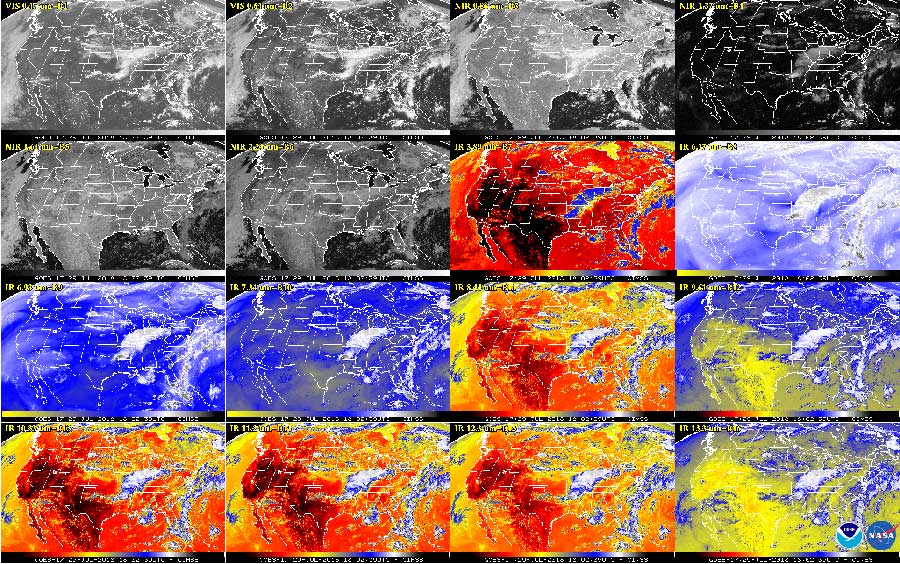
NOAA Shares First Infrared Imagery from GOES-17
August 8, 2018
While experts continue addressing an issue with the cooling system of GOES-17’s Advanced Baseline Imager (ABI), they have made progress in increasing the available observing time of the affected infrared channels. Due to adjustments in operating procedures, the ABI is demonstrating improved performance from initial observations.
This new imagery shows data are currently available from all 16 ABI channels. Channel availability will fluctuate seasonally depending on the amount of solar radiation absorbed by the instrument. During the instrument’s “cool” seasons (near the summer and winter solstice), all channels are expected to be available 24 hours per day. During the instrument’s “warm” seasons (before and after the vernal and autumnal equinox), experts estimate 7 channels (bands 1-7) will be available 24 hours per day and the other 9 channels (bands 8-16) will have outages of 2-6 hours per night. These estimates are preliminary and are still being refined. The warmest part of the season is coming up in early September and performance estimates will need to be confirmed through observation during that time.
Infrared imagery is used to monitor aerosols, clouds, thunderstorms, hurricanes, rainfall, moisture, atmospheric motion, and volcanic ash. Among the channels that are expected to be fully available is the band that is used for fog/cloud identification at night and for fire/hot spot detection, which will be critical for forecasters in the western U.S.

NOAA plans to move GOES-17 into operational service in late 2018. The operational configuration will be determined in consultation with the NOAA Office of Satellite and Product Operations, the National Weather Service, and other stakeholders. GOES-17 is currently observing with more channels, at a higher resolution, and with more rapid refresh than what is available from the current GOES West satellite. While the GOES-17 imager will not produce the full set of planned data, it will provide more and better data than currently available. Experts are confident the GOES constellation will continue to meet the operational needs of the National Weather Service and forecasters across the nation.
NOAA released imagery from the visible and near-infrared bands not affected by the cooling system issue in May. The agency recently provided an update on the instrument’s performance and the latest information on the investigation. Listen to audio from the media teleconference.